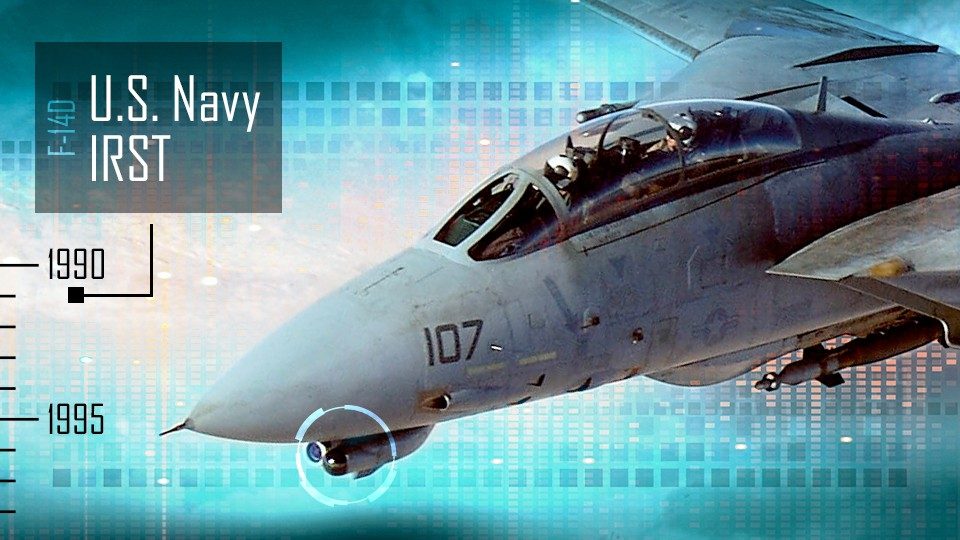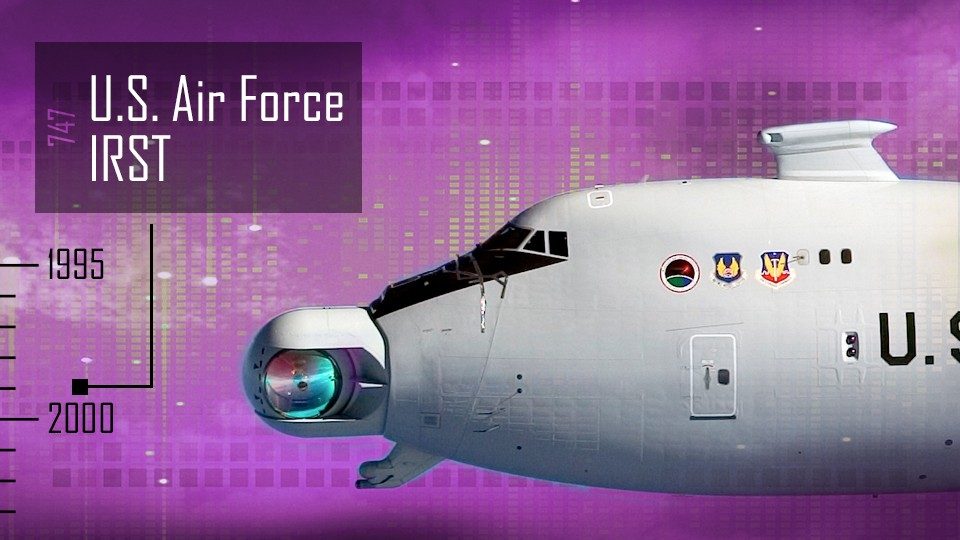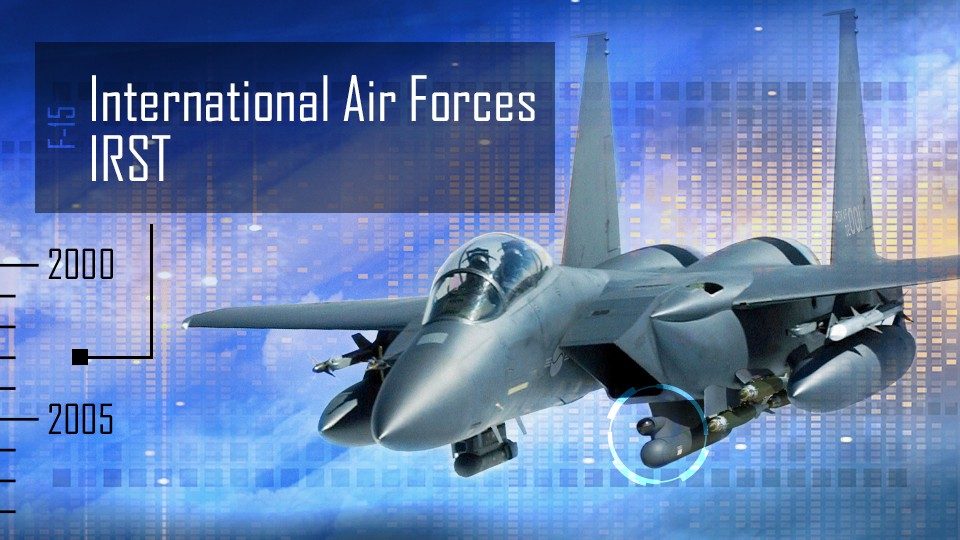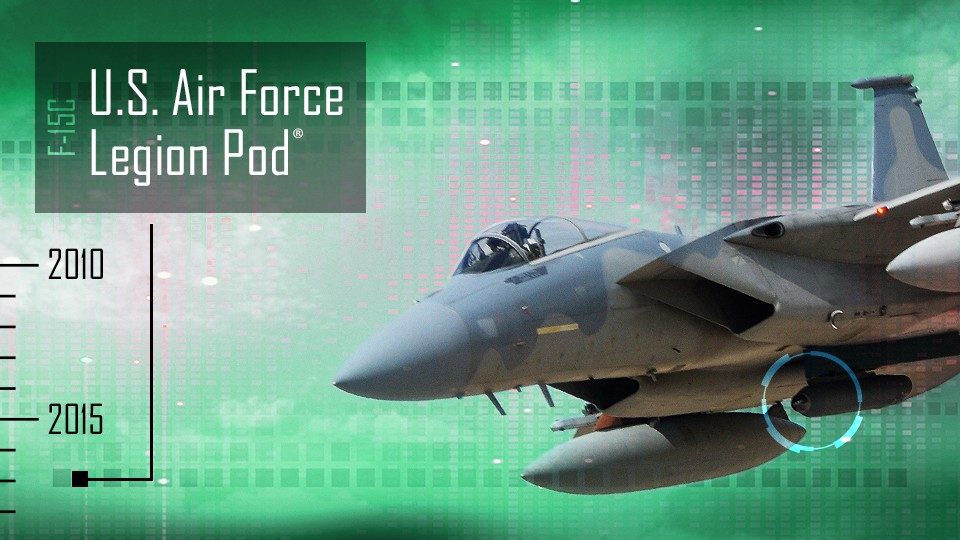An IRST Legacy
First to IRST – that’s one way to describe Lockheed Martin’s storied Infrared Search and Track, or IRST, history.
As a proven provider of IRST technology for more than 30 years, Lockheed Martin has left its mark. To date, the team has delivered more than 350 systems worldwide and consistently advanced its IRST capabilities across a variety of platforms.
Interested in learning more? From pylon to pod and everything in between – see how Lockheed Martin’s IRST technology has evolved and what the team is delivering to customers today.
What is IRST?
IRST is one way to detect and track objects that emit electromagnetic radiation – or infrared signatures. More simply put, it’s a type of sensor system that can detect and track threats at long ranges. What makes it unique is its “passive” nature – meaning it can act without emitting any radiation of its own. We call it a “see first, strike first” sensor system because it enables aircrews to target threats, or adversaries, before those adversaries see (or sense) them.
Why is this capability important? There’s no doubt that near-peer adversaries are advancing their targeting technologies, meaning risks for our airborne platforms are growing. With IRST, our aircrews can fly in threatening environments and engage adversaries without using radar, eliminating the risk of detection, jamming and electronic attack. By seeing first – and striking first – our aircrews increase their lethality and improve their survivability.
Taking off with Tomcat
Lockheed Martin’s first IRST system was integrated on the U.S. Navy’s F-14D Tomcat, achieving initial operating capability in 1991. Mounted below the nose of the aircraft in a chin pod, 60 systems completed more than 200,000 operational hours during deployments on U.S. aircraft carriers. Providing critical situational awareness, this IRST system detected and tracked threats from long distances, increased search volume alongside radar and resolved threat formations.

Looking to Lasers
In the late 1990s, Lockheed Martin’s IRST technology was used for the U.S. Air Force YAL-1 Airborne Laser program. Six IRST systems were strategically placed around a Boeing 747, creating a 360-degree “fence.” Together, these IRST systems scanned the environment to detect ballistic missiles and queue a laser weapon system to destroy the missiles.

Crossing the Globe
Beginning in the 2000s, Lockheed Martin made its first international IRST deliveries. Supporting multiple F-15 customers, these IRST systems were mounted in a pylon and often used in conjunction with LANTIRN Navigation Pods and Sniper Advanced Targeting Pods. Their primary mission was to passively detect and track airborne threats. Lockheed Martin recently announced sustainment efforts for the Royal Saudi Air Force – one of four international IRST customers.
An embedded form of Lockheed Martin’s IRST technology is incorporated in the F-35’s Electro-Optical Targeting System. Upgrades to this capability will be made in conjunction with the F-35’s follow-on modernization program.

Introducing IRST21
In the mid-2000s, Lockheed Martin was selected as the winner in the U.S. Navy’s F/A-18E/F IRST competition, which required 170 systems. Lockheed Martin’s advanced offering – known as IRST21 – does more than provide situational awareness; it detects, tracks and ranges targets with weapon-quality accuracy. For this program, IRST21 is mounted in the F/A-18E/F’s fuel tank – a new configuration. Production is underway.

Legions of Possibilities
Lockheed Martin’s newest offering – Legion Pod – puts its most advanced IRST21 sensor system in a podded configuration, enabling plug-and-play operations across fighter and non-fighter aircraft platforms. Legion Pod’s IRST21 incorporates block improvements that facilitate the engagement of threats at significantly extended ranges.
Legion Pod has the ability to simultaneously operate multiple sensors without costly modifications to the pod or host aircraft. To date, Legion Pod has completed more than 25 flight tests on the F-16 and F-15C. Lockheed Martin also recently announced that Legion Pod was selected as the winner of the U.S. Air Force’s F-15C IRST competition.





